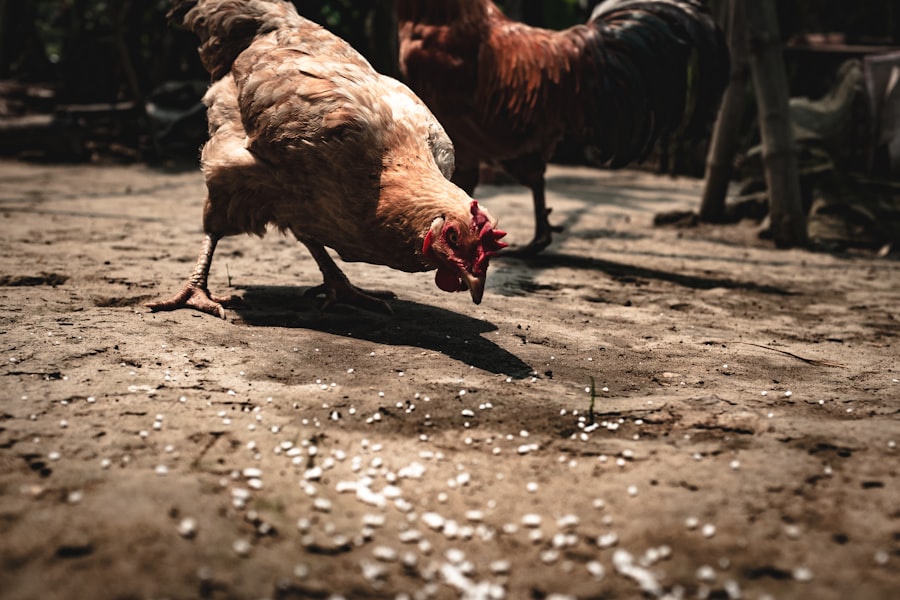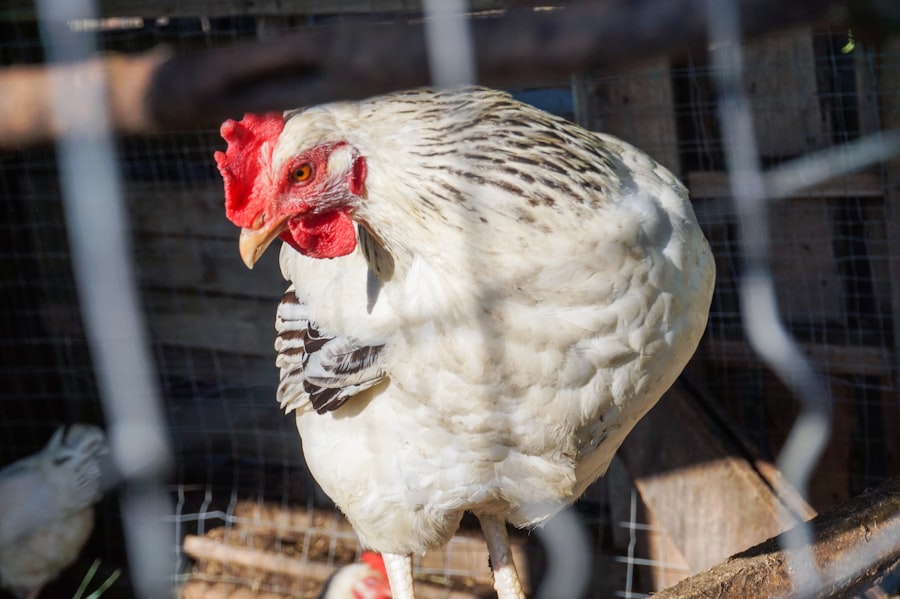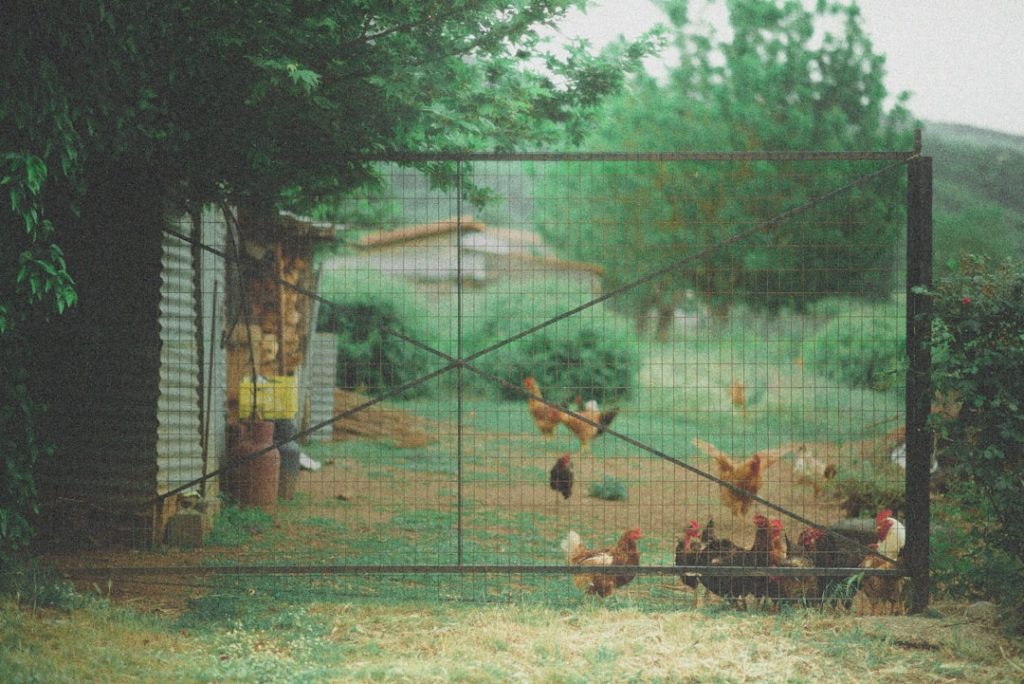Hawks pose a significant threat to backyard chickens due to their exceptional hunting abilities. These birds of prey possess sharp vision and powerful talons, enabling them to capture unprotected poultry with ease. Hawks typically employ stealthy hunting techniques, often attacking from above to catch chickens off guard.
The movement and sounds of chickens in open areas make them particularly attractive targets for hawks. Hawks are opportunistic predators that hunt primarily during daylight hours, with peak activity occurring in the early morning and late afternoon. These periods often coincide with times when chickens are actively foraging outdoors.
Chicken owners should be aware of hawk presence in their vicinity and implement protective measures accordingly. Understanding hawk behavior and hunting patterns is crucial for chicken owners to develop effective strategies for safeguarding their flocks. By recognizing the potential danger hawks present, poultry keepers can take proactive steps to ensure the safety and security of their chickens.
Table of Contents
- 1 Creating a Safe and Secure Chicken Coop
- 2 Utilizing Chicken Run Covers and Netting
- 3 Implementing Scare Tactics and Deterrents
- 4 Providing Adequate Shelter and Roosting Options
- 5 Using Predatory Bird Deterrents
- 6 Monitoring and Supervising Your Flock
- 7 FAQs
- 7.1 What are hocks and why do they pose a threat to chickens?
- 7.2 What are some effective ways to keep hawks away from chickens?
- 7.3 Are there any natural deterrents to keep hawks away from chickens?
- 7.4 Are there any legal methods to deter hawks from attacking chickens?
- 7.5 What should I do if a hawk attacks my chickens?
Key Takeaways
- Hawks pose a significant threat to chickens and can cause serious harm or death
- A secure chicken coop is essential for protecting chickens from hawk attacks
- Chicken run covers and netting can provide additional protection from aerial predators
- Scare tactics and deterrents such as reflective objects and noise can help keep hawks away
- Adequate shelter and roosting options are important for chickens to seek safety from hawks
Creating a Safe and Secure Chicken Coop
Designing a Safe Haven
One of the most effective ways to protect your chickens from hawks is to create a safe and secure chicken coop. A well-built coop provides a safe haven for your flock, keeping them protected from predators such as hawks. When designing or building a chicken coop, it’s important to consider the size, materials, and security features.
A Secure Physical Structure
The coop should be spacious enough to accommodate your flock comfortably, with sturdy walls and a secure roof to prevent hawks from gaining access. In addition to the physical structure of the coop, it’s important to consider the placement of the coop within your property. Ideally, the coop should be located in an area with natural barriers such as trees or shrubs that can provide additional protection from aerial predators like hawks.
Additional Security Measures
It’s also important to ensure that the coop is securely locked at night to prevent any potential entry by predators. By creating a safe and secure chicken coop, you can provide your flock with a protected environment where they can roost and lay eggs without the threat of hawk attacks.
Utilizing Chicken Run Covers and Netting

In addition to a secure chicken coop, utilizing chicken run covers and netting can provide an extra layer of protection for your flock. Chicken run covers are designed to provide overhead protection for your chickens, shielding them from aerial predators such as hawks. These covers can be made from durable materials such as wire mesh or netting, providing a barrier that prevents hawks from swooping down and catching their prey.
By covering the chicken run with these protective materials, you can create a safe outdoor space for your chickens to roam and forage without the constant threat of hawk attacks. Netting can also be used to enclose the entire chicken run, creating a secure barrier that prevents hawks from gaining access to your flock. When choosing netting for your chicken run, it’s important to select a durable and strong material that can withstand the sharp talons of hawks.
By utilizing chicken run covers and netting, you can effectively protect your flock from aerial predators while still allowing them to enjoy the benefits of outdoor foraging and exercise.
Implementing Scare Tactics and Deterrents
Implementing scare tactics and deterrents can be an effective way to keep hawks at bay and protect your chickens. There are various methods that can be used to deter hawks from targeting your flock, including visual deterrents, sound deterrents, and motion-activated devices. Visual deterrents such as scarecrows or reflective tape can be placed around the chicken coop and run to create an intimidating environment for hawks.
These visual deterrents can disrupt the hunting patterns of hawks and make them think twice before targeting your chickens. Sound deterrents such as predator calls or distress calls can also be effective in deterring hawks from approaching your flock. These calls mimic the sounds of distressed or predatory birds, signaling danger to hawks and causing them to steer clear of your property.
Motion-activated devices such as sprinklers or lights can also startle hawks and deter them from approaching your chickens. By implementing scare tactics and deterrents, you can create an environment that is less appealing to hawks, reducing the risk of attacks on your flock.
Providing Adequate Shelter and Roosting Options
Providing adequate shelter and roosting options for your chickens is essential for their safety and well-being, especially in areas where hawks are prevalent. Hawks are known for targeting roosting chickens, making it crucial to provide secure roosting options within the chicken coop. Elevated roosting bars can be installed within the coop, allowing chickens to perch safely off the ground at night.
These roosting bars should be positioned away from windows or openings where hawks could potentially gain access. In addition to secure roosting options, providing adequate shelter within the chicken run is important for protecting your flock from aerial predators. Dense shrubs or bushes can provide natural cover for chickens, allowing them to seek refuge from hawks when necessary.
Creating a well-structured environment with ample shelter and roosting options can significantly reduce the risk of hawk attacks on your flock.
Using Predatory Bird Deterrents

Visual Deterrents
One common type of predatory bird deterrent is a visual deterrent that mimics the appearance of a larger predator bird, such as an owl or hawk. These decoys can be strategically placed around the chicken coop and run to create the illusion of a threatening presence, deterring hawks from targeting your flock.
Auditory Deterrents
Auditory deterrents such as ultrasonic devices or distress calls can also be effective in repelling predatory birds by emitting sounds that are unpleasant or alarming to them.
Combining Deterrents for Maximum Protection
By using predatory bird deterrents in conjunction with other protective measures, you can create a fortified defense against hawk attacks on your chickens.
Monitoring and Supervising Your Flock
Finally, monitoring and supervising your flock is essential for ensuring their safety and security in an area where hawks are present. Regularly observing your chickens during their outdoor activities can help you identify any signs of potential danger or distress caused by predatory birds. By staying vigilant and attentive to the behavior of your flock, you can intervene quickly if there is any indication of a hawk in the vicinity.
Supervising your flock also allows you to assess the effectiveness of the protective measures you have implemented, such as chicken run covers, netting, and deterrents. By observing how your chickens interact with these protective features, you can make adjustments as needed to further enhance their effectiveness in deterring hawks. Additionally, being present during times when hawks are most active, such as early morning or late afternoon, allows you to provide an added layer of protection by keeping a watchful eye on your flock.
In conclusion, understanding the threat of hawks to your chickens is crucial for implementing effective strategies to protect your flock from these aerial predators. By creating a safe and secure chicken coop, utilizing chicken run covers and netting, implementing scare tactics and deterrents, providing adequate shelter and roosting options, using predatory bird deterrents, and monitoring and supervising your flock, you can significantly reduce the risk of hawk attacks on your chickens. With careful planning and proactive measures, you can create a protected environment where your flock can thrive without the constant threat of hawk predation.
If you’re looking for more tips on keeping your chickens safe and healthy, you might want to check out this article on how to care for goslings. It’s important to provide a secure environment for all of your poultry, and this article offers valuable insights on raising and caring for young geese.
FAQs
What are hocks and why do they pose a threat to chickens?
Hawks are birds of prey that hunt and feed on small animals, including chickens. They pose a threat to chickens by swooping down and capturing them for food.
What are some effective ways to keep hawks away from chickens?
Some effective ways to keep hawks away from chickens include using scare tactics such as reflective objects, noise makers, and predator decoys. Providing overhead cover and secure housing for chickens can also help deter hawks.
Are there any natural deterrents to keep hawks away from chickens?
Some natural deterrents to keep hawks away from chickens include planting tall trees or installing tall poles to provide overhead cover for the chickens. Additionally, having roosters in the flock can help alert the hens to potential threats.
Are there any legal methods to deter hawks from attacking chickens?
In the United States, hawks are protected under the Migratory Bird Treaty Act, and it is illegal to harm or kill them without a permit. However, there are legal methods such as using scare tactics and providing secure housing for chickens to deter hawks.
What should I do if a hawk attacks my chickens?
If a hawk attacks your chickens, it is important to intervene to protect your flock. You can scare the hawk away by making loud noises or using a water hose. It is also important to check for any injured chickens and provide them with proper care.
Meet Walter, the feathered-friend fanatic of Florida! Nestled in the sunshine state, Walter struts through life with his feathered companions, clucking his way to happiness. With a coop that’s fancier than a five-star hotel, he’s the Don Juan of the chicken world. When he’s not teaching his hens to do the cha-cha, you’ll find him in a heated debate with his prized rooster, Sir Clucks-a-Lot. Walter’s poultry passion is no yolk; he’s the sunny-side-up guy you never knew you needed in your flock of friends!







